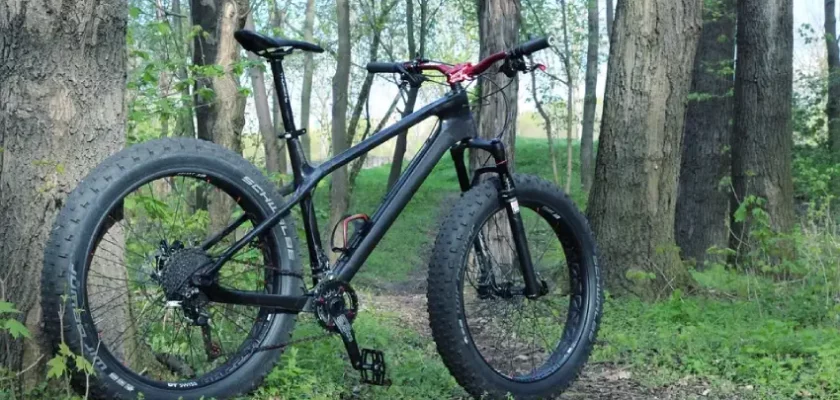If you’ve ever pondered this question, you’re not alone. These unique bicycles have gained popularity in recent years, known for their bulky tires that offer enhanced traction and stability on various terrains. But when it comes to speed, do fat tire bikes measure up?
In a nutshell, yes, fat tire bikes can be surprisingly fast. While their hefty appearance might suggest otherwise, these bikes have proven their speed capabilities in different conditions.
The combination of larger tires and lower tire pressure allows fat tire bikes to glide smoothly over loose gravel, sand, snow, and even rough trails. As a result, riders can maintain momentum and speed where traditional bikes may struggle.
Let’s dive deeper into the world of fat tire bikes to unveil the factors that make them unexpectedly fast and why they have become a favorite among cycling enthusiasts. Discover how these bikes defy expectations and deliver an exhilarating riding experience. So, let’s settle the debate once and for all – are fat tire bikes fast?
Are Fat Tire bikes fast?

Fat Tire Bike Features
To understand the speed potential of fat tire bikes, it’s essential to look at their unique features. Some of the key characteristics of fat tire bikes that differentiate them from regular mountain bikes include:
1. Oversized Tires: Fat tire bikes feature wider and larger tires than traditional bikes. Typically ranging from 3.8 to 5 inches in width, these tires provide enhanced stability, traction, and flotation on various surfaces.
2. Low Tire Pressure: Fat tire bikes are designed to be ridden with significantly lower tire pressures compared to regular mountain bikes. This allows the tires to conform to uneven surfaces, providing a smoother ride and better grip.
3. Robust Frame Design: Fat tire bikes often have sturdier frames to handle the additional weight exerted on them due to the larger tires. The frames are usually made from materials like aluminum or carbon fiber to maintain durability without compromising weight.
Factors Affecting Speed
Now that we understand the unique features of fat tire bikes, let’s explore the factors that determine their speed capabilities:
Tire Pressure
One factor that greatly affects the speed of a fat tire bike is the tire pressure. Since fat tire bikes allow for lower tire pressure, it may seem logical to assume that lower pressures would make the bike slower.
However, lower tire pressure actually increases the contact patch between the tire and the ground, providing better traction. This increased traction can result in higher speeds, especially when riding on surfaces like loose gravel or snow.
Tire Width and Rolling Resistance
The width of the tires also plays a crucial role in determining speed. Fat tire bikes have wider tires than regular bikes, which can create more rolling resistance. Fat tires experience increased ground friction due to their larger contact area.
While this extra resistance may slightly decrease the bike’s top speed on smooth surfaces, it also helps the bike maintain stability and control on rough terrains.
Gearing
The gearing system on a fat tire bike, similar to other bicycles, affects its speed. The gear ratios determine how efficiently the pedal power is transferred to the wheels.
Fat tire bikes are often equipped with a wide range of gears, allowing riders to tackle both challenging uphill terrains and gain higher speeds on flat surfaces. By shifting gears, riders can optimize their pedaling cadence and maintain a comfortable speed according to the terrain.
Rider Skills and Fitness Level
Ultimately, the speed of a fat tire bike also depends on the skills and fitness level of the rider. Experienced riders who are familiar with handling fat tire bikes can navigate obstacles and make quick maneuvers, thus potentially achieving higher speeds. Similarly, a rider’s fitness level, the ability to generate more power with each pedal stroke, can also impact the overall speed.
Frequently Asked Questions
Is it true that fat tire bikes are faster than regular bikes?
Fat tire bikes are not designed for speed. The wide tires provide better stability and traction on challenging terrains, but they can increase rolling resistance on smooth surfaces, making them slower than regular bikes.
Can fat tire bikes be used for racing or competitive cycling?
While fat tire bike races and competitions do exist, they are typically held on off-road trails with varying terrain. Fat tire bikes are not ideal for traditional road racing due to their heavier weight and slower speed on pavement.
Are fat tire bikes suitable for long-distance rides?
Fat tire bikes can handle long-distance rides, but their heavier weight and slower speed make them less efficient for covering long distances compared to regular bikes. However, they can be a great option for adventurous riders seeking off-road exploration.
Do fat tire bikes require more effort to ride?
Riding a fat tire bike does require more effort due to their increased rolling resistance caused by the wide tires. However, this can provide a more challenging workout and an opportunity to build leg strength.
Are fat tire bikes slower uphill?
Fat tire bikes may be slower uphill compared to regular bikes due to their heavier weight and increased rolling resistance caused by wider tires. However, the traction provided by the tires can help improve stability and grip on steep and uneven terrain.
Final Thoughts
In conclusion, the question remains: are fat tire bikes fast? Our analysis shows that while fat tire bikes are not designed for high-speed racing, they do offer certain advantages when it comes to speed.
The larger surface area of fat tires provides increased traction, allowing riders to maintain momentum and tackle challenging terrains. Moreover, the lower tire pressure absorbs shocks, resulting in a smoother ride and enabling riders to maintain a consistent pace.
However, it is important to note that fat tire bikes may not match the speed capabilities of traditional mountain bikes or road bikes. Ultimately, whether a fat tire bike is considered fast or not depends on the rider’s goals and the terrain they plan to conquer.

